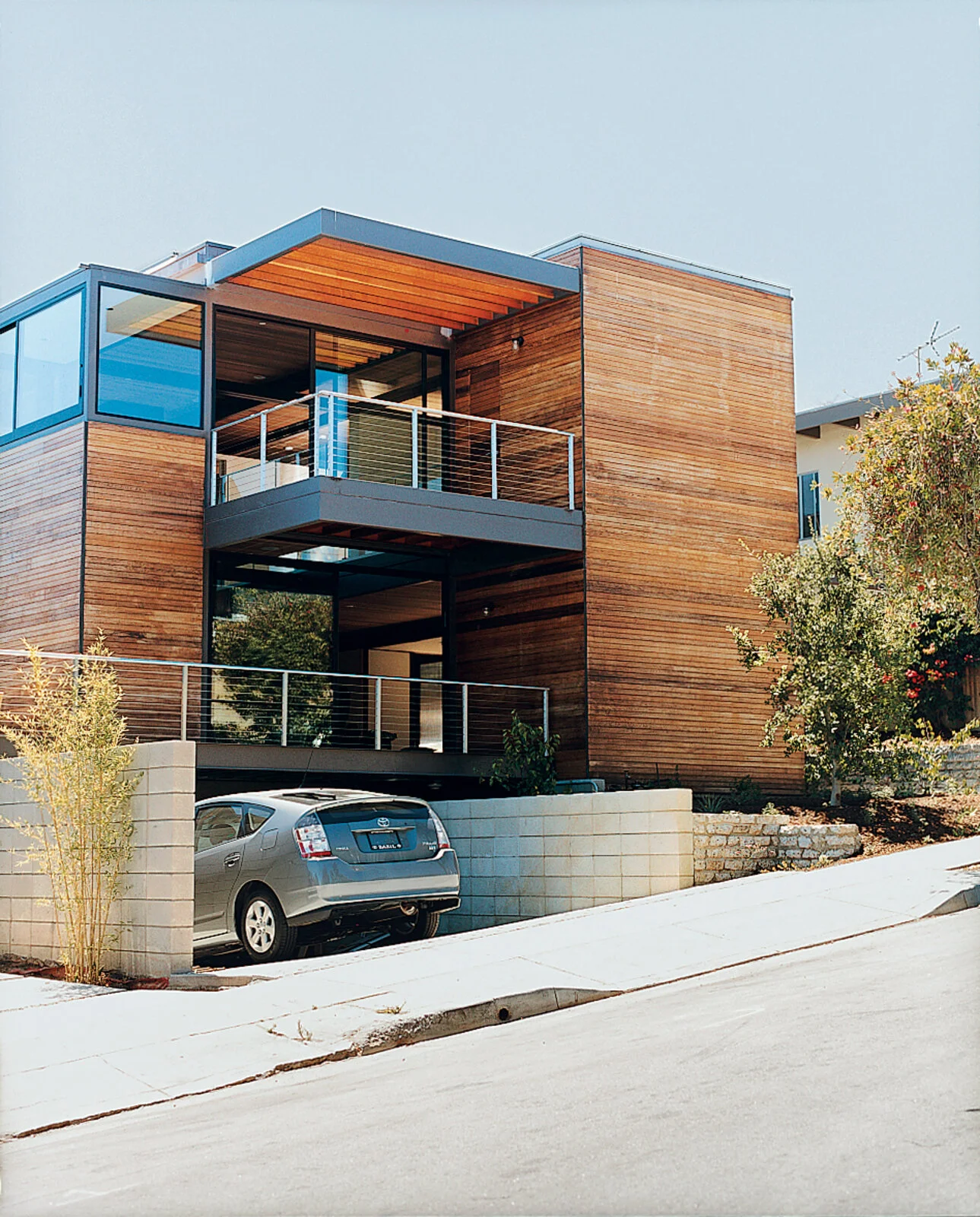Project Highlight: Glenn Residence
One day last April there was great excitement on Highland Avenue, a quiet, hilly street (on which this writer happens to live) of Craftsman bungalows and 1960s apartment buildings in the Ocean Park neighborhood of Santa Monica, California. The road was closed off, and residents and TV crews turned out to watch as six huge lowboy trucks delivered their load of steel-framed modules, 11 in all, which were then craned into place and bolted and welded together over the course of eight hours. By the end of the day, the champagne was flowing and Steve Glenn was standing in the future dining/living area of his first LivingHome, toasting his architect and construction crew. Almost three months of finish work later, he moved in.
Glenn, a wired 42-year-old, is a onetime computer-technology entrepreneur and longtime architecture enthusiast, who recalls a childhood passion for Case Study Houses and Frank Lloyd Wright. After exhaustive research, he concluded, however, that it is developers rather than architects who hold the levers, and decided a couple years ago to try his hand at residential development. He identified a market of people who, like himself, "care deeply about design, and about the health and sustainability" of buildings, and launched LivingHomes, a modern prefab home company whose goal is to wed "profit and purpose" by selling stylish green homes at a price accessible to "people on the marketing pyramid below those who can afford custom."
The designer of his first five model homes is architect Ray Kappe, founder of SCI-Arc and a living legend among many architecture enthusiasts, whose own 1967 house, a gorgeous concrete, glass, and wood structure nestled among trees, is often held up as an icon of West Coast modernism. "Ray’s my favorite living architect," says Glenn. "He practices a warm modernism that is very unique." Not only that, it turned out Kappe had prior experience with prefab and with environmentally sensitive design. For him, LivingHomes are the "realization of a long-held ambition." The modular steel LivingHomes are based on a wooden system Kappe devised 40 years ago; the overtly 3-D quality of Glenn’s house, with its changes in level and interlocking vertical and horizontal planes, is reminiscent of Kappe’s residence, albeit compressed onto a much tighter, and less lush, site.
Glenn claims his homes "are clearly among the most environmentally considered production homes ever built," and designed his prototype house to achieve a LEED Platinum rating, which it received in August. "Zero Energy, Zero Water, Zero Waste, Zero Carbon, Zero Emissions" is his mantra, and to that end he has packed his house with energy-saving technology and sustainable and nontoxic materials. A solar-energy system on the roof is intended to provide 75 to 100 percent of the electricity and 80 to 90 percent of the hot water. There is a graywater system and a storm-water cistern for watering a garden (currently in process) of drought-resistant plants; the irrigation system will tap in to weather telemetry on the Internet to assess when to operate. A rooftop garden (also pending) is designed to divert storm water and to help with insulation and absorb sunlight, thereby, says Glenn, "reducing the heat-island effect." Materials are carefully chosen for their healthful and sustainable properties.
Though they are factory produced, LivingHomes are not currently spinning off the assembly line in identical units, to be shipped to an anonymous, mass customer base. "I think it will be a while, if ever, until you literally put a credit card in and order a home," says Glenn. "A lot of this is site-specific." The company has seven homes under contract, each of which is customized to meet individual needs, and Glenn is moving ahead with the first phase of four houses in a development in Joshua Tree, near Palm Springs, which were presold. "We are not doing kit homes," he says. "We haven’t released a standard design. What we are doing is constrained custom, a level of customization that allows people to play with size and room placement." He says that, eventually, the company will offer five or six standard models designed by Ray Kappe, ranging from 1,000 to 3,000 square feet.
"Now comes the hard part, which is creating a sustainable business," says Glenn, acknowledging that his own house exceeded intended costs. The finish process proved frustrating at times, he says, and overly long, but also educational. "We’ve learned lots of connection details that we need to make better, cheaper, and quicker, and major systems—the frame, the windows, electrical, waterproofing, environmental systems—that we intend to refine. In the future we want to do as much of the work as possible in the factory."
Ultimately, for LivingHomes to succeed as a business, the houses need to work as living homes. Glenn candidly assesses his own prototype: "I think it turned out really well. I’m really happy, but until I actually live in it, that’s the test."









